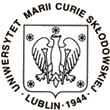

 |
 |
 |
|
Ingemar Ragnarsson
LTH, Lund The nuclear mass at finite angular momentain collaboration with Filip Kondev, Eddie Paul, Mark Riley and John Simpson Experimental nuclear masses are often shown as the experimental shell energy', i.e. E_{shell}(Z,N) = E_{exp}^{g.s.}(Z,N) - E_{ld}(Z,N) where $E_{exp}^{g.s.}$ is the observed energy of the ground state and $E_{ld}$ is some liquid drop or droplet model expression. This definition can be generalized to define an experimental shell energy for a specific nucleus at a fixed angular momentum $I$, E_{shell}(Z,N,I) = (E_{exp}^{g.s.}(Z,N) + E_{exc}(Z,N,I)) - E_{rld}(Z,N,I), i.e. the total observed energy of a high spin state relative to the rotating liquid drop energy, $E_{rld}(Z,N,I)$. The shell energy $E_{shell}(Z,N,I)$ gives a new insight into different phenomena at high spin, e.g.
It becomes possible to compare high-spin states in different mass
regions and thus different ways to build angular momenta.
For many nuclei in which very high-spin states have been observed, the ground state mass is not known or measured with a large uncertainty. Thus, systematic mass measurements with an accuracy of $\pm 10$ keV or so are important for the present study. *** download abstract in ps file ***
| ||
Last modificated: 2003-09-22

